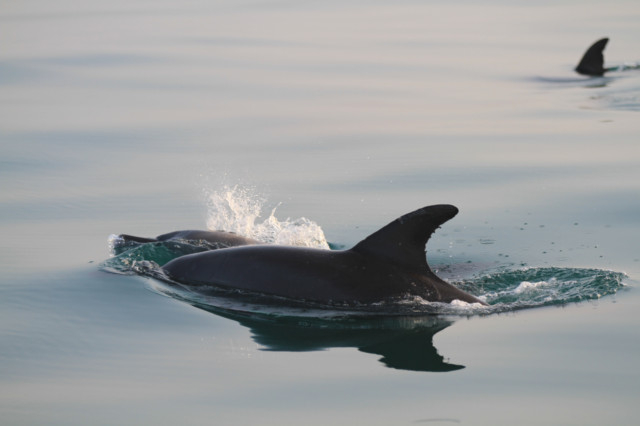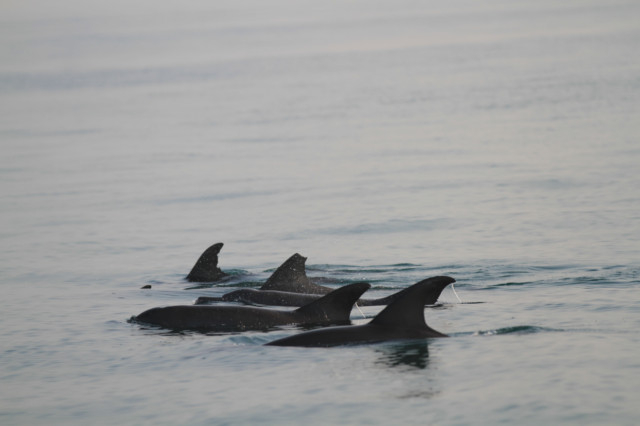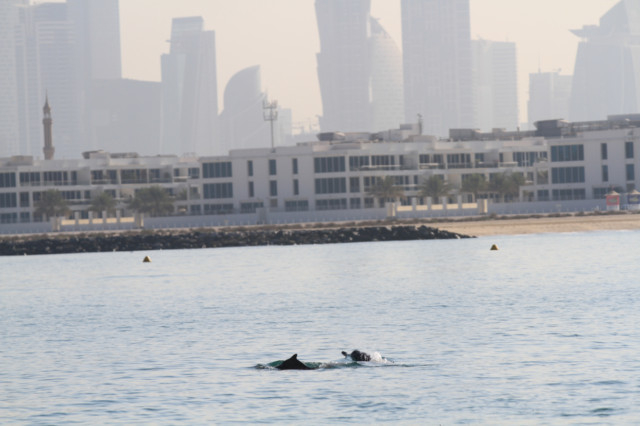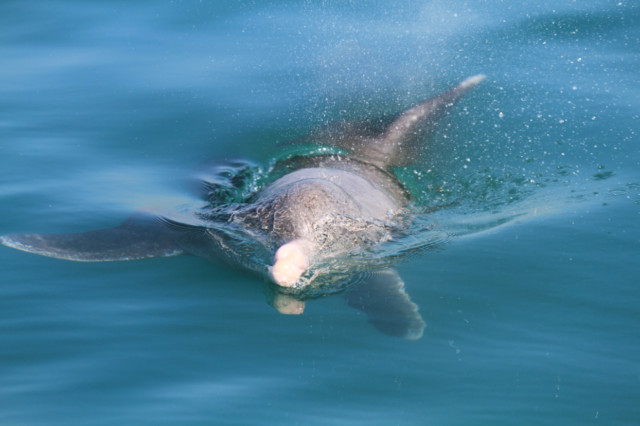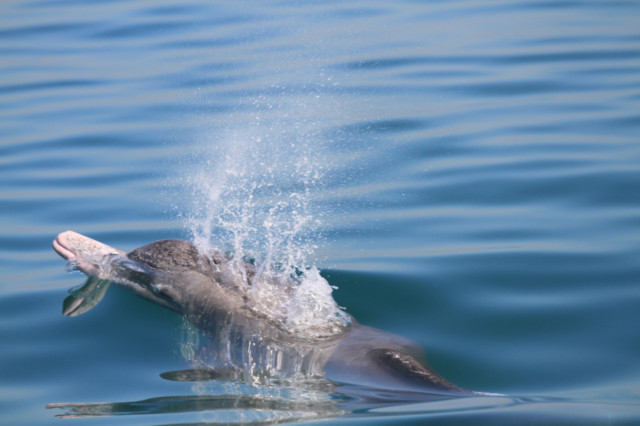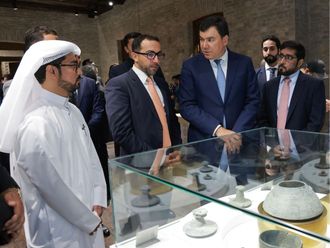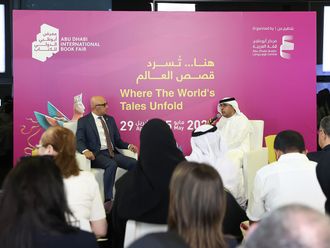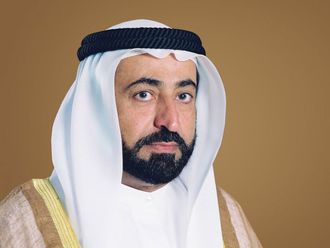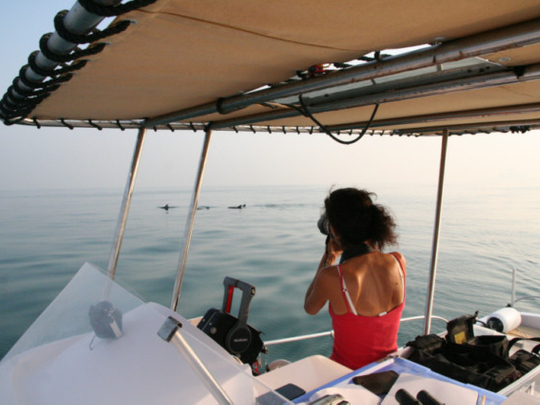
Abu Dhabi: Over a hundred dolphin sightings have been reported within fives miles off Abu Dhabi and Dubai coastline in the last one year, a pioneering initiative has revealed.
Dubai-based Italian researcher Dr Ada Natoli, 42, who has undertaken a survey on the endangered species told XPRESS: “These sightings suggest the occurrence and frequency of dolphins along the UAE coastline are higher than what people think or are aware of.”
A PhD in dolphin studies from the UK, Dr Natoli said the sightings have been reported from several areas, particularly Saadiyat Island and the main canals in Abu Dhabi and off the shores of Palm Jumeriah, Dubai Marina, Jumeirah Beach Park and Maritime City.
Sightings have been reported by the public. Dr Natoli said she also spoke to private boat owners, charter company captains, canoeists and officials from government departments, including RTA, Dubai Municipality and Dubai Marine Police Rescue Team.
Significantly, the majority of them reported they had sighted dolphins within five miles from the shore just four months prior to the survey, she said, noting their occurrence is a recent phenomenon.
According to Dr Natoli, two general surveys on dugongs were conducted by the Abu Dhabi-based Environmental Agency in 1986 and 1999, following which a 71 per cent decrease in dolphin sightings was estimated over the 13 years.
She said she embarked on her survey in October last year as there was no baseline information available about dolphins in the UAE. This despite over 10 species of whales and dolphins believed to occur in the region.
“We need baseline data to estimate the dolphins’ actual population size, understand if they are resident or seasonal, their frequency, how they use the waters, and so on. Without such information, it is impossible to raise attention and formulate effective conservation measures,” she said.
According to her, dolphins are significant because they are at the top of the marine food chain like sharks, tuna, swordfish, kingfish and other predators. ‘’By studying dolphins, we can understand the status of the marine environment. They are good indicators of the level of contamination in the sea. If the environment can sustain a dolphin population, it means there are enough fish and no contaminants.”
Public involvement
Dr Natoli said she is actively involving the public in her project as more people on board mean greater chances of sightings. Besides independent sightings being reported to the project, she also takes volunteers (see box) on her boat every time she sets out to sea — which could be two to three times a week, depending on the weather.
Her trips begin at around 6.30am from the Dubai Marina Yacht Club, where she berths her 30 feet Harman Duretti Sportfisher boat. “The boat has been sponsored by boat company Duretti and the club allows me to berth it for free.”
Dr Natoli said she is conducting a transect survey (Path along which one counts and records occurrences of the phenomena of study) which in its current phase extends from Jebel Ali Palm to Maritime City. A transect survey, which can be used for statistical analysis, is a method used to study a defined area and entails following predetermined routes in a flat sea at constant speed.
“It is easier to spot dolphins when the sea is flat and calm. I drive the boat and take at least two skilled observers as they can constantly scan the water surface.
“Every time we spot a dolphin, we stop, take GPS coordinates, estimate its distance from our position and get on the camera. We have three cameras: Canon D7, Canon 350 and a tiny Gapro – with which we take pictures and videos. We fill in all the details on a template that we carry.”
Natoli said the key to a sighting lies in making a photo identification. “The Photo-Id is important because it allows us to track individual dolphins over time, estimate their number and social relationships and follow the life cycle and migration patterns of groups. We focus on the dorsal fin as it has permanent notches and scars on it.”
She said a group of canoeists had sighted a group of dolphins on April 16 last year about one mile off the Dubai Offshore Sailing Club. “Two were identifiable because they had taken a video. The clip was posted to the project and as a token of gratitude, we asked them to choose the dolphins’ names. They called them Paso and Trigger. When we began our survey off Palm Jumeirah on October 8, we were able to resight Paso among a group of 23 other dolphins on the first day.
“She was swimming besides a mother, a calf and a juvenile. We could say for sure it was Paso from the photo-ID.”
Different species
Natoli said three species of dolphins are commonly found in UAE coastal waters — bottlenose dolphin, humpback dolphin and finless porpoise (see illustration).
She said strandings of dead dolphins are also known to occur, although their frequency is not known as there is still no organised stranding network. “Stranding is any event in which a dolphin casts ashore dead or still alive. Skilled personnel identify the species, age, gender and potential causes of death, collect samples for genetic, toxicological analysis and stomach contents,” she said, adding invaluable data was collected from a sighting at Jumeirah Beach Park in October.
Two stranding events were also reported at Saadiyat island in Abu Dhabi. On both occasions, authorities allowed Dr Natoli to reach the carcass and conduct an autopsy.


